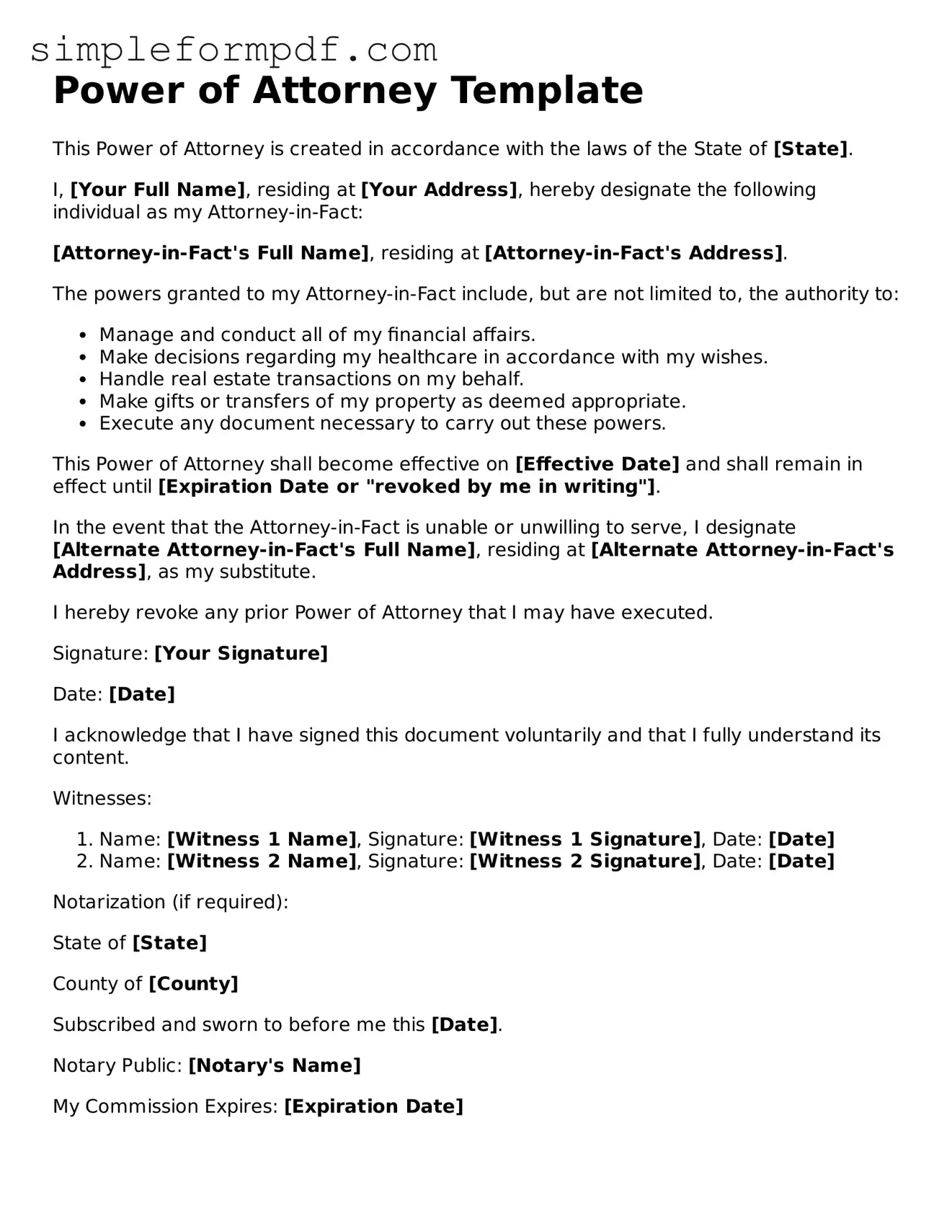Power of Attorney Template
This Power of Attorney is created in accordance with the laws of the State of [State].
I, [Your Full Name], residing at [Your Address], hereby designate the following individual as my Attorney-in-Fact:
[Attorney-in-Fact's Full Name], residing at [Attorney-in-Fact's Address].
The powers granted to my Attorney-in-Fact include, but are not limited to, the authority to:
- Manage and conduct all of my financial affairs.
- Make decisions regarding my healthcare in accordance with my wishes.
- Handle real estate transactions on my behalf.
- Make gifts or transfers of my property as deemed appropriate.
- Execute any document necessary to carry out these powers.
This Power of Attorney shall become effective on [Effective Date] and shall remain in effect until [Expiration Date or "revoked by me in writing"].
In the event that the Attorney-in-Fact is unable or unwilling to serve, I designate [Alternate Attorney-in-Fact's Full Name], residing at [Alternate Attorney-in-Fact's Address], as my substitute.
I hereby revoke any prior Power of Attorney that I may have executed.
Signature: [Your Signature]
Date: [Date]
I acknowledge that I have signed this document voluntarily and that I fully understand its content.
Witnesses:
- Name: [Witness 1 Name], Signature: [Witness 1 Signature], Date: [Date]
- Name: [Witness 2 Name], Signature: [Witness 2 Signature], Date: [Date]
Notarization (if required):
State of [State]
County of [County]
Subscribed and sworn to before me this [Date].
Notary Public: [Notary's Name]
My Commission Expires: [Expiration Date]
